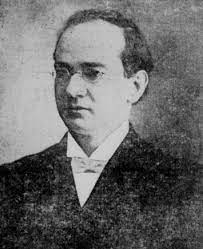Horror Stories
Unveiling the Mystery: The 21 Grams Experiment Explores the Weight of the Human Soul
The “21 grams experiment” by physician Duncan MacDougall in 1907 tried to measure the weight of the human soul at the moment of death. One subject lost 21.3 grams. Despite controversy and scientific rejection, it continues to intrigue and inspire discussions about the weight of the soul.

The “21 grams experiment” conducted by physician Duncan MacDougall, from Haverhill, Massachusetts, in 1907 has remained a subject of intrigue and controversy for over a century. MacDougall hypothesized that the human soul possesses physical weight and attempted to measure the weight lost by a person at the moment of death. One of the six subjects lost three-quarters of an ounce (21.3 grams). Despite its flaws and subsequent rejection by the scientific community, the experiment has left a lasting impact, inspiring cultural references and discussions about the weight of the soul.

Duncan Macdougall
MacDougall’s experiment began by identifying six patients in nursing homes whose deaths were imminent. Among them, four suffered from tuberculosis, one from diabetes, and one from unspecified causes. Deliberately selecting individuals who were physically exhausted due to their medical conditions, MacDougall aimed to ensure their stillness at the time of death for accurate measurements. When these patients neared their final moments, their entire beds were carefully placed on an industrial-sized scale with a remarkable sensitivity of two-tenths of an ounce (5.6 grams).
Driven by the belief that humans possess souls while animals do not, MacDougall also sought to measure weight changes in fifteen dogs after their demise. Regrettably, he struggled to find suitable subjects among sick or dying dogs, leading to the presumption that he resorted to poisoning healthy canines to advance his experiment’s objectives.
The results of MacDougall’s experiment yielded a mixed bag of findings. One patient initially lost weight but subsequently regained the lost mass. Two other patients experienced weight loss at the moment of death, followed by further reduction a few minutes later. However, only one patient recorded a loss of “three-fourths of an ounce” (21.3 grams) in weight that coincided with the time of death. MacDougall dismissed one patient’s results due to issues with the scale’s calibration and discounted another patient’s data as the equipment was still being fine-tuned during the individual’s passing. MacDougall also noted that none of the dogs lost weight after death.
While MacDougall believed that the results from his experiment hinted at the existence of weight in the human soul, his report, which was not published until 1907, emphasized the need for repeated experimentation before any conclusive conclusions could be drawn.
The reaction to MacDougall’s experiment was swift and far-reaching. Before he could publish his results, The New York Times broke the story with an article boldly titled “Soul has Weight, Physician Thinks,” capturing the public’s imagination and sparking widespread discussion. MacDougall’s findings were subsequently published in the Journal of the American Society for Psychical Research in April of the same year, as well as the medical journal American Medicine.
However, the experiment faced substantial criticism from within the scientific community. Physician Augustus P. Clarke, in a scathing critique published in the May issue of American Medicine, questioned the experiment’s validity. Clarke argued that the sudden rise in body temperature at the time of death, resulting from the lungs no longer cooling blood, could easily account for the alleged missing 21 grams. Moreover, Clarke highlighted that dogs, lacking sweat glands, would not experience weight loss in the same manner after death. The ongoing debate between MacDougall and Clarke regarding the experiment’s validity persisted in subsequent issues of the journal until at least December of that year.
MacDougall’s experiment ultimately faced widespread rejection by the scientific community. He was accused of flawed methods and even outright fraud in obtaining his results. Karl Kruszelnicki, a renowned science communicator, pointed out the experiment’s selective reporting, highlighting that MacDougall ignored the majority of the results and that only one out of the six patients supported his hypothesis. Kruszelnicki also criticized the experiment’s small sample size and raised doubts about MacDougall’s ability to accurately determine the exact moment of a person’s death given the technological limitations of the time. Physicist Robert L. Park dismissed MacDougall’s experiments as lacking any scientific merit, while psychologist Bruce Hood deemed the findings unscientific due to the unreliability and non-replicability of the weight loss observed. Professor Richard Wiseman described the experiment as a mere curiosity confined to a “large pile of scientific curiosities labeled ‘almost certainly not true'” within the scientific community.
In 2013, an article by Snopes further discredited the experiment, citing suspect methods, an insufficient sample size, and imprecise weight measurement capabilities as flaws that rendered the experiment unreliable. Snopes unequivocally concluded that MacDougall’s experiments should not be considered as proof of anything, let alone as evidence for the weight of the soul being 21 grams. Criticism also extended to MacDougall’s treatment of animals, as it was revealed that he likely poisoned and killed fifteen healthy dogs in an unethical attempt to support his research.
Following the experiment, MacDougall expressed interest in conducting further investigations, including attempts to capture photographs of souls. However, it seems that he did not pursue these avenues of research, and he passed away in 1920 without further scientific contributions. It is worth noting that no subsequent experiments attempting to replicate MacDougall’s findings have been conducted.
Nevertheless, despite its rejection within the scientific community, MacDougall’s experiment left a lasting impact on popular culture. The idea that the soul weighs 21 grams became a widely known concept, and it has been referenced in various forms of media. The title of the film “21 Grams” directly alludes to the experiment, further embedding its influence in contemporary society. References to the concept of a soul weighing 21 grams can be found in manga, such as the 2013 issue of Gantz, podcasts like the 2013 episode of Welcome to Night Vale, films like “The Empire of Corpses” in 2015, and even in popular television shows like a 2021 episode of Ted Lasso and a 2023 issue of the manga One Piece. Songs titled “21 Grams,” which evoke the weight of the soul, have been released by various artists, including Looptroop Rockers, Roar, Niykee Heaton, Fedez, August Burns Red, Thundamentals, Arena, and Travis Scott, with his 2018 song “No Bystanders.” MacDougall and his experiments have been featured explicitly in documentary films like “Beyond and Back” from 1978 and in episodes of TV series like Dark Matters: Twisted But True. Additionally, MacDougall’s name and his expertise in the weight and measurement of souls appear in Gail Carriger’s 2009 novel “Soulless,” albeit in a fictional context.
Although Duncan MacDougall’s 21 grams experiment may have been discredited within the scientific community, its impact on popular culture and its status as an enduring scientific curiosity continue to captivate and inspire discussion about the weight of the human soul. And you dear reader, what do you think about it?














